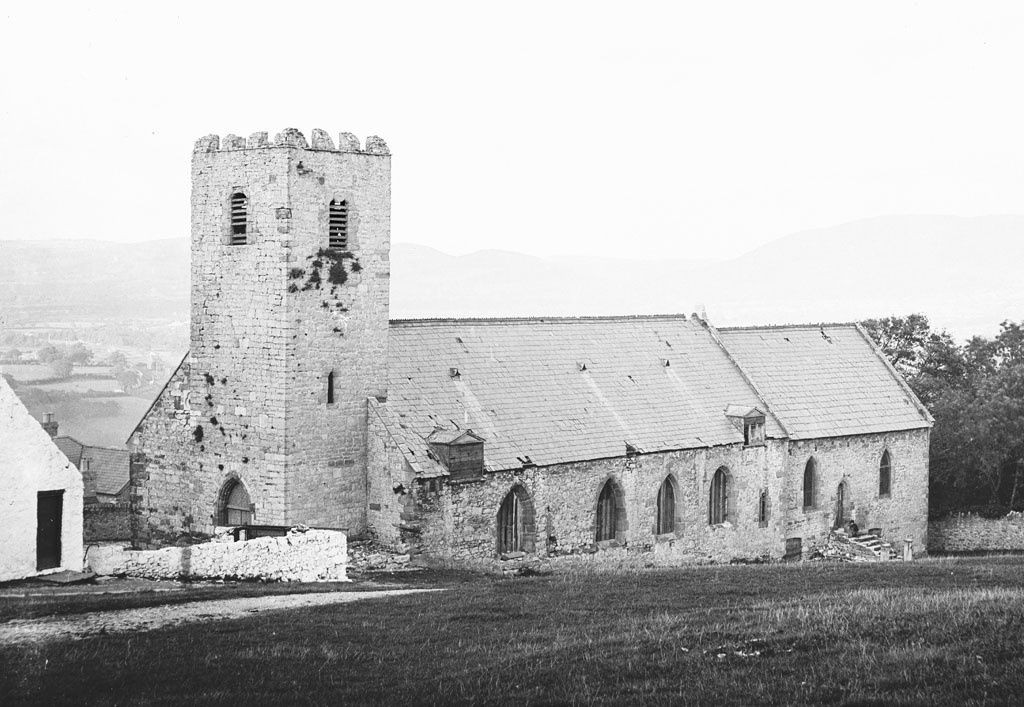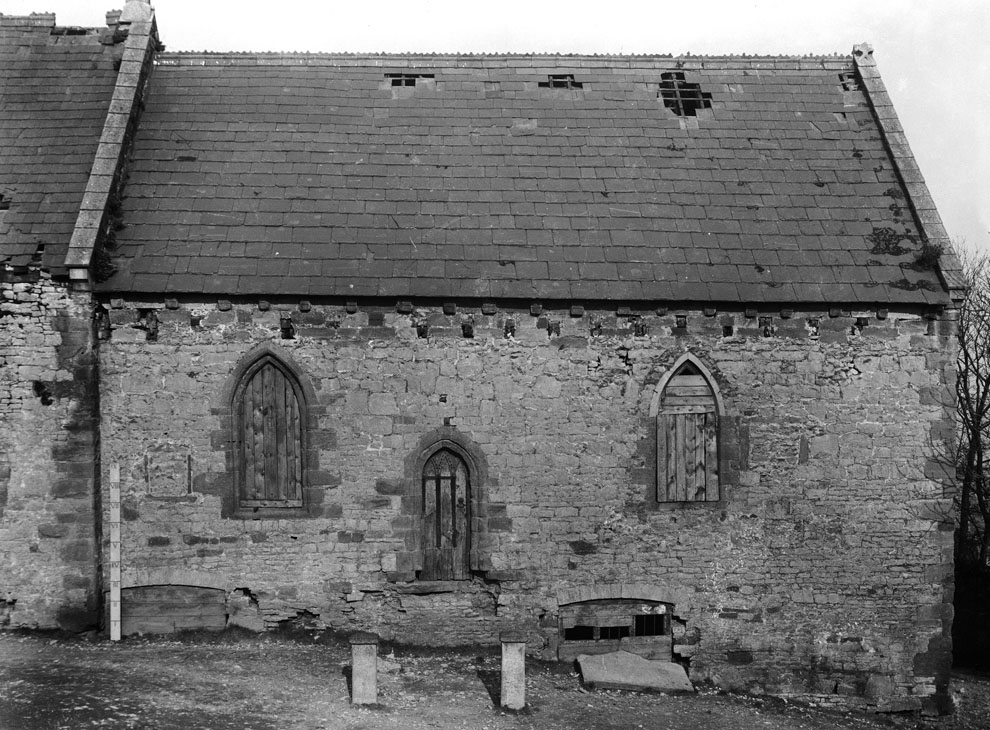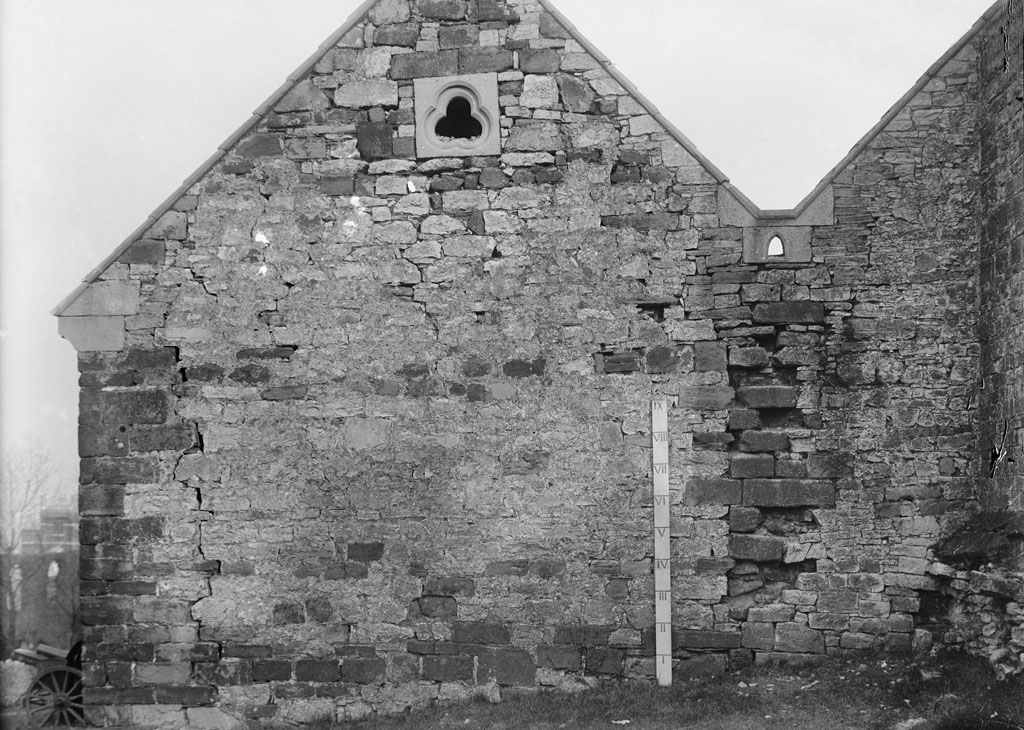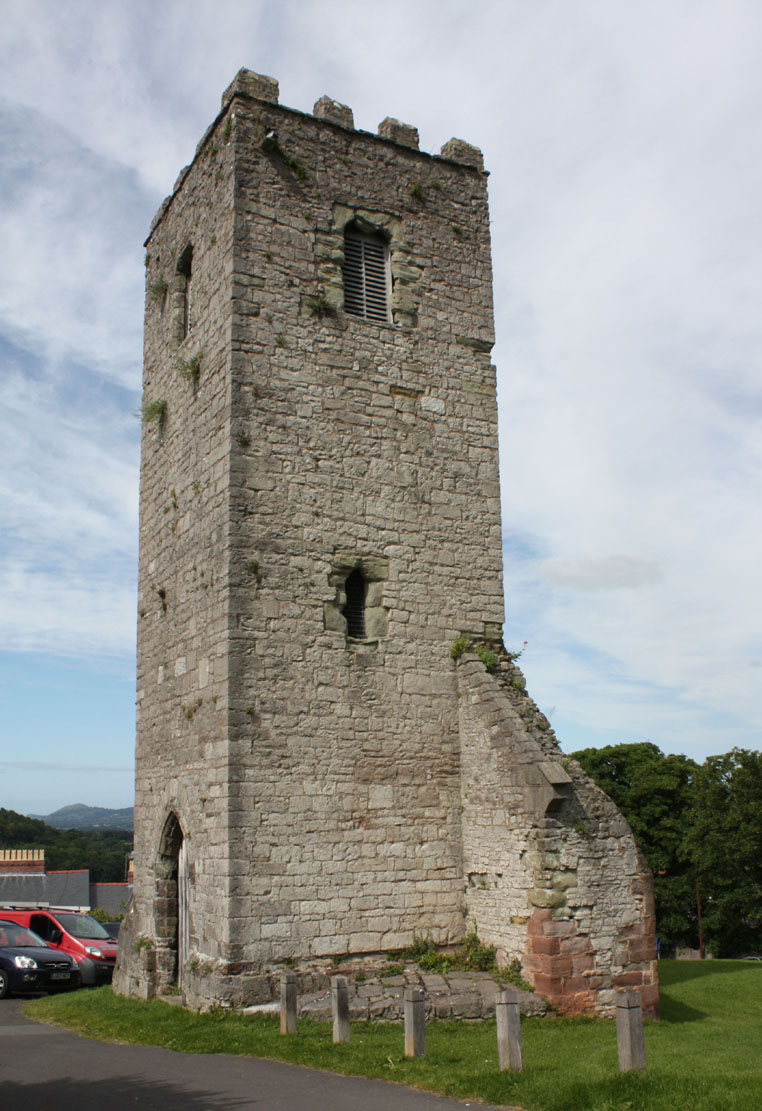History
St. Hilary’s church in Denbigh was built in the 14th century as a temple for the residents and garrison of a nearby castle, but over time began to take over the functions of the parish church. It was mentioned for the first time in historical documents in 1334. In the 15th or 16th century, its windows were transformed into a perpendicular gothic style, and in the years 1707-1711 the northern aisle was completely rebuilt. In the mid-nineteenth century church was in a bad condition. Due to the estimated high costs of repair, it was decided to erect a new temple dedicated to St. Mary, in a more convenient location. After its opening in 1875, the church of St. Hilary was abandoned. In 1904, the roof was removed, and the nave and chancel were destroyed in the twenties of the twentieth century.
Architecture
St. Hilary’s Church was built in the center of a small town surrounded by defensive walls, halfway between the Burgher Gate to the north and the castle entrance to the south, on the left side of a steep road leading to the rocky, highest point of the hill. In the Middle Ages, the church consisted of a five-bay rectangular nave, a slightly shorter, lower and narrower chancel, terminated on the eastern side by a straight wall, and a slender, quadrangular tower on the western side. The entire structure was approximately 36.5 meters long.
The tower was built on a square plan with sides 4.9 meters long. It was 14.1 meters high, had three stories above ground floor, and a crown with a slightly later battlement, probably built in the 15th century. The tower walls were not supported by buttresses, but were reinforced at the ground level by a batter. In the upper part, at the parapet level, gargoyles were installed to ensure rainwater drainage, while lighting came from single narrow openings in the north and south façades, and larger, two-light windows on the top floor with bells, facing all four cardinal directions.
The nave and chancel were illuminated by pointed windows. In the south wall of the chancel, between two windows, there was also a pointed, moulded portal, intended for the vicar. The main entrance for the local congregation was in traditional location, in the western part of the south wall of the nave. Inside, beneath the eastern part of the church was a crypt, slightly smaller than the chancel. Its construction was made possible by the sloping hillside.
Current state
Today, only the church tower and small fragments of the western wall of the nave remain, a testament to the thoughtless and destructive actions carried out even in the 20th century. There are no traces visible to the naked eye of the nave, the later north aisle and the chancel. Admission to the former church grounds is free, but entering the tower is likely not possible.
bibliography:
Butler L., Denbigh Castle, Cardiff 2007.
Hubbard E., Clwyd (Denbighshire and Flintshire), Frome-London 1986.
Salter M., The old parish churches of North Wales, Malvern 1993.
The Royal Commission on The Ancient and Historical Monuments and Constructions in Wales and Monmouthshire. An Inventory of the Ancient and Historical Monuments in Wales and Monmouthshire, IV County of Denbigh, London 1914.





